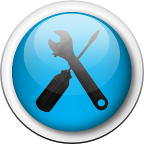Toolboxes contain sets of classes and algorithms. They can be used by units from the domains or by stand-alone applications to perform certain tasks. Dependencies between toolboxes should be avoided if possible. However, it is not prohibited, since there will always be some low-level toolboxes (e.g. image conversion) that are used by high-level toolboxes (e.g. AAM toolbox).
The documentations of the following standard toolboxes are available:
Furthermore, documentations of the following non-standard toolboxes are available:
| 

 1.8.14
1.8.14